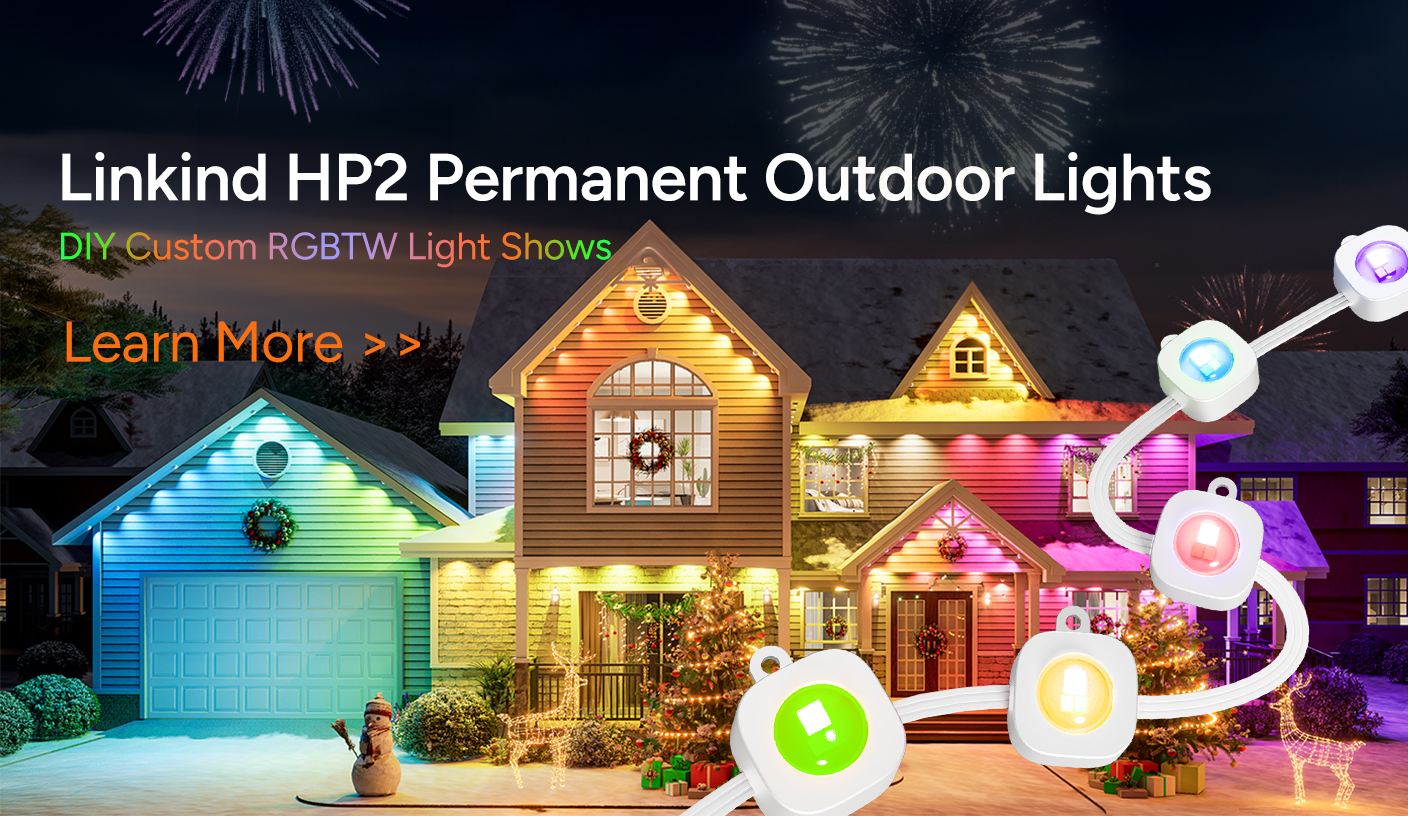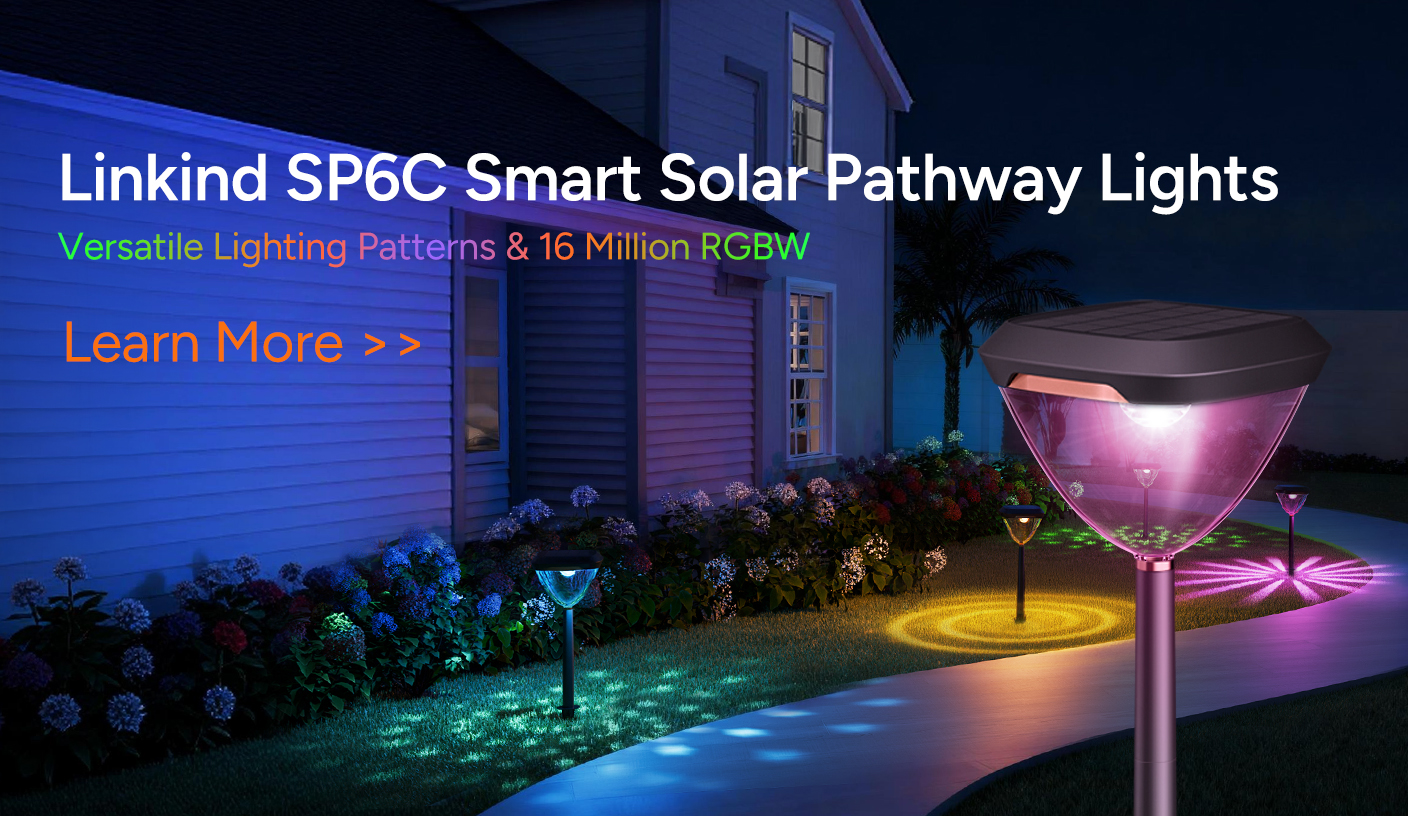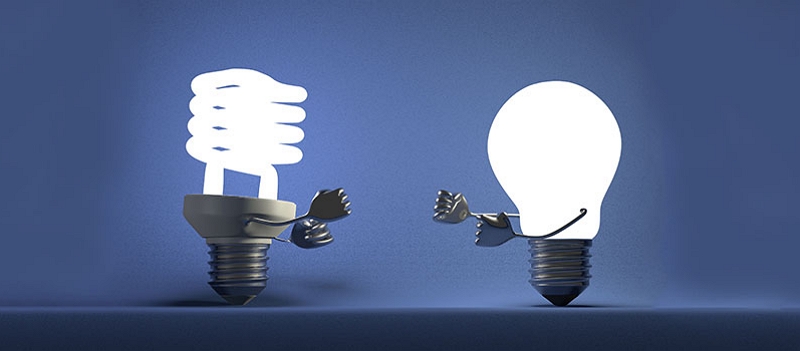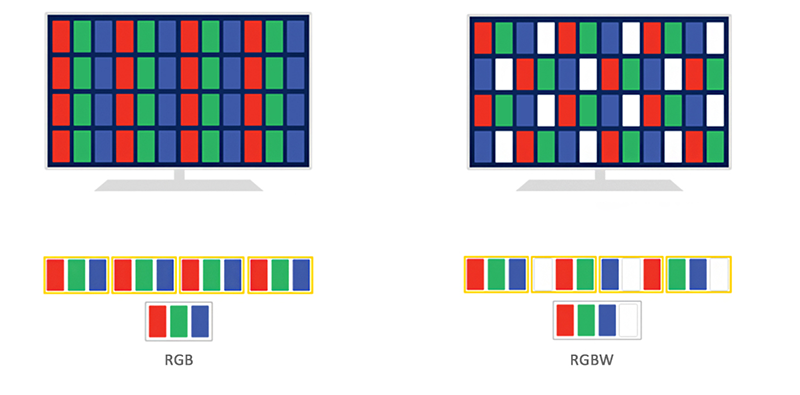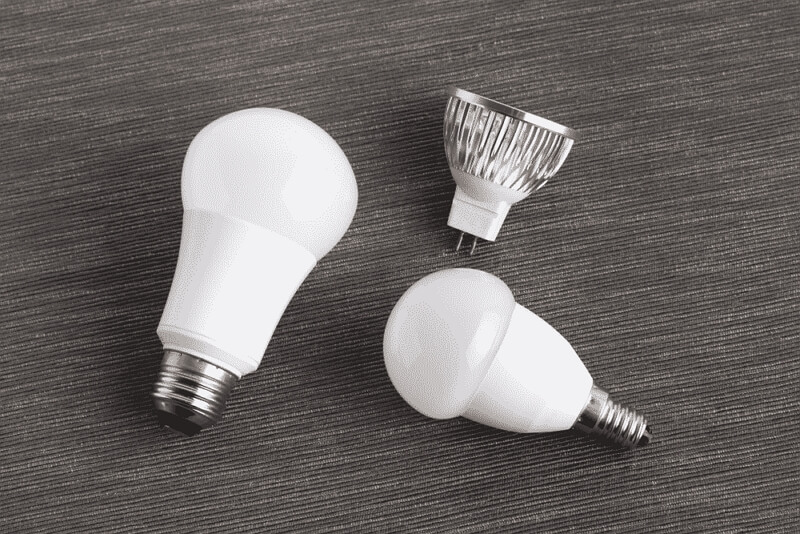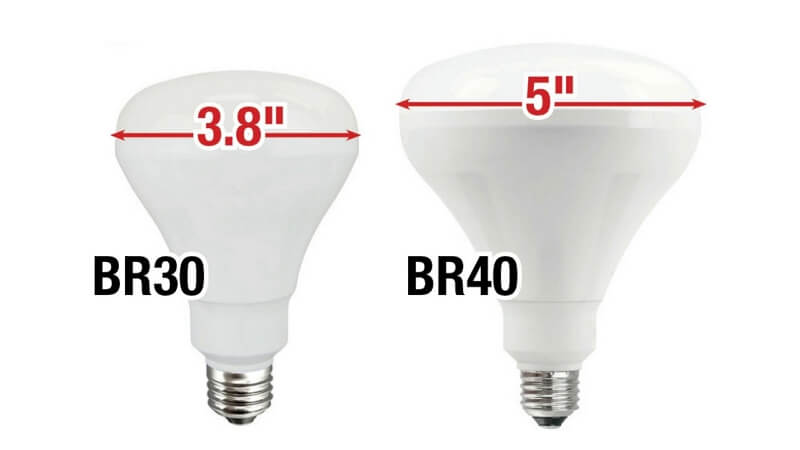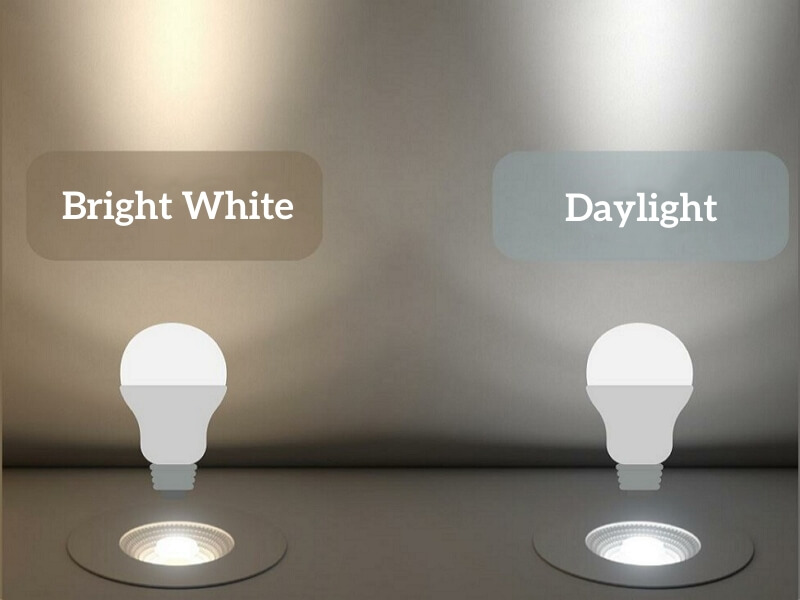When choosing the right type of light bulb for your home or business, you may be wondering whether to go for halogen or LED. Both types of light bulbs have advantages and disadvantages and can affect the brightness, color, efficiency, and cost of your lighting system.
So, you must make a complete comparison of halogen vs. LED lights before making a decision. In this article, we will compare halogen vs. LED lights in terms of how they work, how efficient they are, and their pros and cons. Keep reading for all the details.
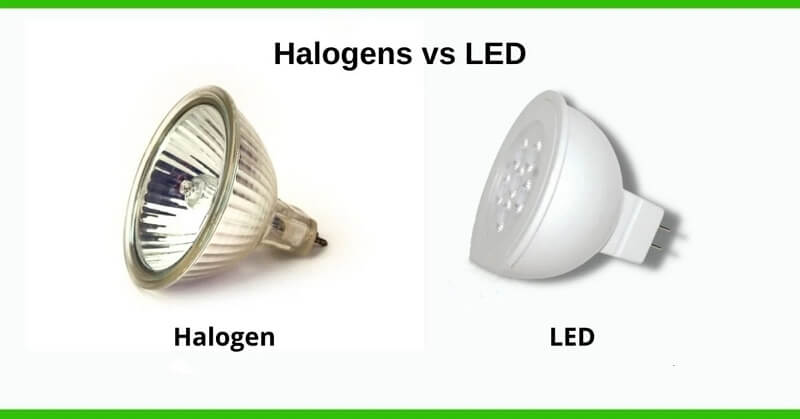

Part 1. An Overview of Halogen Lights
Halogen lights are incandescent light bulbs that use a tungsten filament and a halogen gas, such as iodine or bromine, to produce light. These lights pass an electric current through a tungsten filament, which heats up and emits light.
They emit brighter, whiter light with a color temperature of around 3000K to 3500K, making them suitable for various applications such as residential lighting, spotlights, and automotive headlights. Furthermore, halogen lights are dimmable and provide instant full brightness when switched on. However, they generate a significant amount of heat and are less energy-efficient than other options in modern lighting.
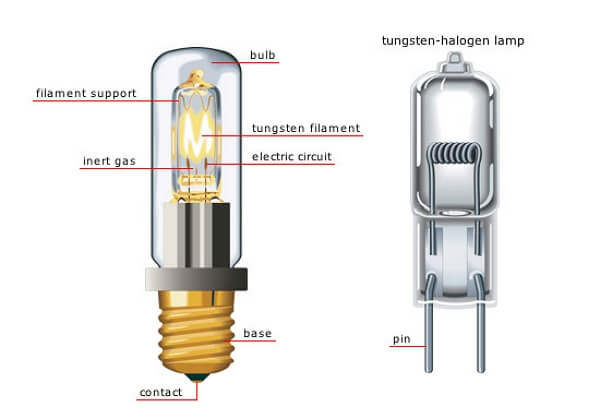

Part 2. The Advantages & Disadvantages of Halogen Lights
Advantages of Halogen Lights
- Bright Light: Halogen lights produce a bright and crisp white light, making them ideal for applications requiring high-quality illumination.
- Lifespan: They have a lifespan of up to 2500 hours which is longer than regular incandescent bulbs.
- Dimmable: Most halogen lamps are dimmable, allowing users to adjust the light intensity according to their preferences and needs.
- Versatility: Available in various shapes and sizes, halogen lights are suitable for various applications, including residential, commercial, and automotive lighting.
Disadvantages of Halogen Lights
- Energy Inefficiency: Halogen lights are less energy-efficient than newer lighting technologies like LED and CFL bulbs. They consume more electricity and produce more heat for the same light output.
- Safety Concerns: The high operating temperature can also cause burns if the lamp is touched with bare hands. Handling halogen lamps with care and avoiding direct contact with the bulb is crucial.
- High Heat Generation: Halogen lights can get very hot during operation, posing a fire hazard if they come into contact with flammable materials. This requires proper handling and consideration for lamp placement.
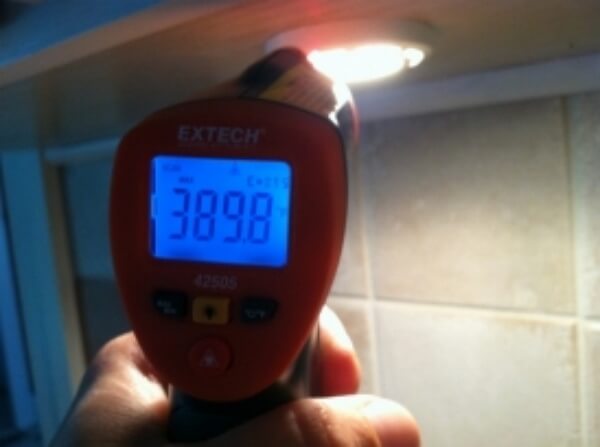

Part 3. An Overview of LED Lights
LED lights are electric lights that use light-emitting diodes (LEDs) to produce light. They are small semiconductor devices that emit light when an electric current passes through them. LED lights work by converting electricity into light using the principle of electroluminescence.
These lights provide instant illumination, have a long lifespan of up to 25 times longer than incandescent bulbs, and are resistant to shocks and vibrations. LEDs offer design flexibility, come in various shapes and colors, and can be dimmed for adjustable brightness. Despite a higher initial investment, their cost-effectiveness over time has made them the preferred choice for residential, commercial, automotive, and various other applications.
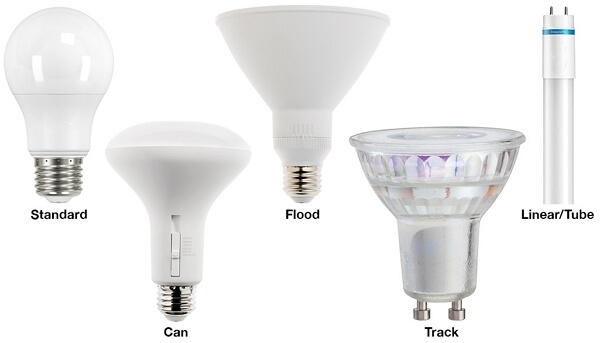

Part 4. The Advantages & Disadvantages of LED Lights
Advantages of LED Lights
- Energy Efficiency: LED lights are highly energy-efficient, consuming significantly less electricity than traditional incandescent and fluorescent bulbs, reducing energy bills and lowering carbon emissions.
- Environmental Friendliness: LED lights do not contain hazardous materials like mercury, making them safer for the environment and easier to dispose of.
- Durability: LEDs are solid-state devices with no fragile components like filaments or glass tubes, making them more resistant to shocks, vibrations, and external impacts.
- Directional Light Emission: LEDs emit light in a specific direction, making them more efficient for applications like spotlights and task lighting, where focused illumination is needed.
Disadvantages of LED Lights
- Higher Initial Cost: LEDs can be more expensive upfront compared to traditional incandescent and fluorescent bulbs, which may deter some consumers from initially adopting them
- Quality Variability: The quality of LED products can vary among manufacturers and suppliers, leading to differences in performance, brightness, and lifespan. It is essential to choose reputable brands for better reliability.
- Color Temperature Issues: Some LED bulbs may have inconsistent color temperatures or color rendering, which could result in unsatisfactory lighting quality for specific applications.
Part 5. What's the Difference Between Halogen and LED?
So, the question is, which one should you choose between halogen vs. LED lights? To make it easier to choose, here is a breakdown of the characteristics of halogen vs LED lights.
- Energy Efficiency: LED lights are significantly more energy-efficient than halogen lights. LEDs convert almost all their electricity into light, whereas halogen lights waste a substantial amount of energy as heat, making them less efficient.
- Lifespan: LEDs have a much longer operational life compared to halogen lights. LED bulbs can last up to 25 times longer than halogen bulbs, reducing the need for frequent replacements.
- Heat Generation: Halogen lights generate significant heat during operation, whereas LEDs produce minimal heat. This makes LEDs safer and more suitable for applications where heat sensitivity is a concern.
- Energy Consumption: LED lights consume much less electricity than halogen lights for the same light output. The energy savings with LED lighting can be substantial over time, leading to lower electricity bills.
- Dimming Compatibility: Most LED lights are compatible with dimmer switches, offering smooth dimming capabilities. On the other hand, halogen lights are also dimmable, but their dimming performance may not be as smooth as LEDs.
- Quality and Color Rendering: LEDs generally offer better color rendering and consistency in color temperature than halogen lights, providing higher-quality and more pleasant lighting experiences.
- Heat Generation: Halogen lights generate significant heat during operation, whereas LEDs produce minimal heat. LEDs can operate at 50 degree-Celsius, while halogens can go up to 250 degrees. This makes LEDs safer and more suitable for applications where heat sensitivity is a concern.
Part 6. Should I Replace Halogen with LED?
Now that you are clear about the features of halogen vs. LED, should you replace all halogen lights with LED bulbs? In this debate of halogen vs. LED, choosing either option depends on your circumstances. Both have pros and cons, but generally, LED lights are more efficient and a better contemporary option.
If you want to replace the halogen lights with LED bulbs, you can find some of the best options among AiDot’s smart light bulbs. With various bulb options and a diverse range of features, you will surely find something for your place. One of the best LED light bulbs is Linkind A19 Smart WiFi Light Bulbs with Remote Control, the ultimate LED light bulb. Some of the other features of the AiDot OREiN BR30 WiFi Smart RGBTW Flood Light Bulb include:
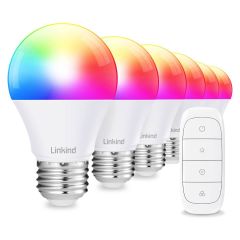
- 【Remote Control from Anywhere & Anytime】 No hub or bridge is required. Simply download the free “Linkind” app and pair it with your WiFi (only supports 2.4G). As long as the smart light bulb stays connected to WiFi, you can easily control it from anywhere at any time.
- 【Smart Lighting with Voice Control】Linkind smart WiFi multi-color lights work with SmartThings, compatible with Alexa and Google Google Home Seamless, which allows you to control the smart lights with simple voice commands. You can have Alexa to turn/on, brighten/dim the lights, or select your desired colors.
- 【Color Changing Brings More Fun Beautifies Your Home】 The A19 E26 RGBW smart light provides over 16 million colors and dimmable white light from soft to cool (2700k-6500k). Adjust the brightness via Linkind app or voice control instead of dimmers. Just create your preferred ambience and enjoy it.
- 【Customized Schedules & Scenes】 Set different schedules to turn on/off the smart light according to your daily routines to wake you up in the morning, welcome you back to home and never leave you in the darkness. Various preset features like Bonfire, Party, Sleeping, Reading, etc. and scenes are available to meet your demand and enrich your life.
- 【Excellent Illumination】The smart light features a 800lm tunable white light, super bright for daily illumination. Equivalent to 60W halogens but save you over 85% on electricity bill. Lifetime rated up to 25, 000 hours.
Conclusion
So, in halogen vs. LED, which one to choose? Halogen and LED lights are two different types of light bulbs with different ways of producing light, different levels of efficiency, and other characteristics. The best light bulb type depends on your needs and preferences, such as size, shape, design, brightness, color, efficiency, and budget. You should consider the pros and cons of both types of light bulbs before making a decision.
Hopefully, this gives you all the clarity you need on the halogen vs. LED debate. If you want to choose smart lighting solutions for your home, AiDot has some of the best options. You can visit AiDot’s website to browse their lighting solutions and choose the perfect one for your home.











